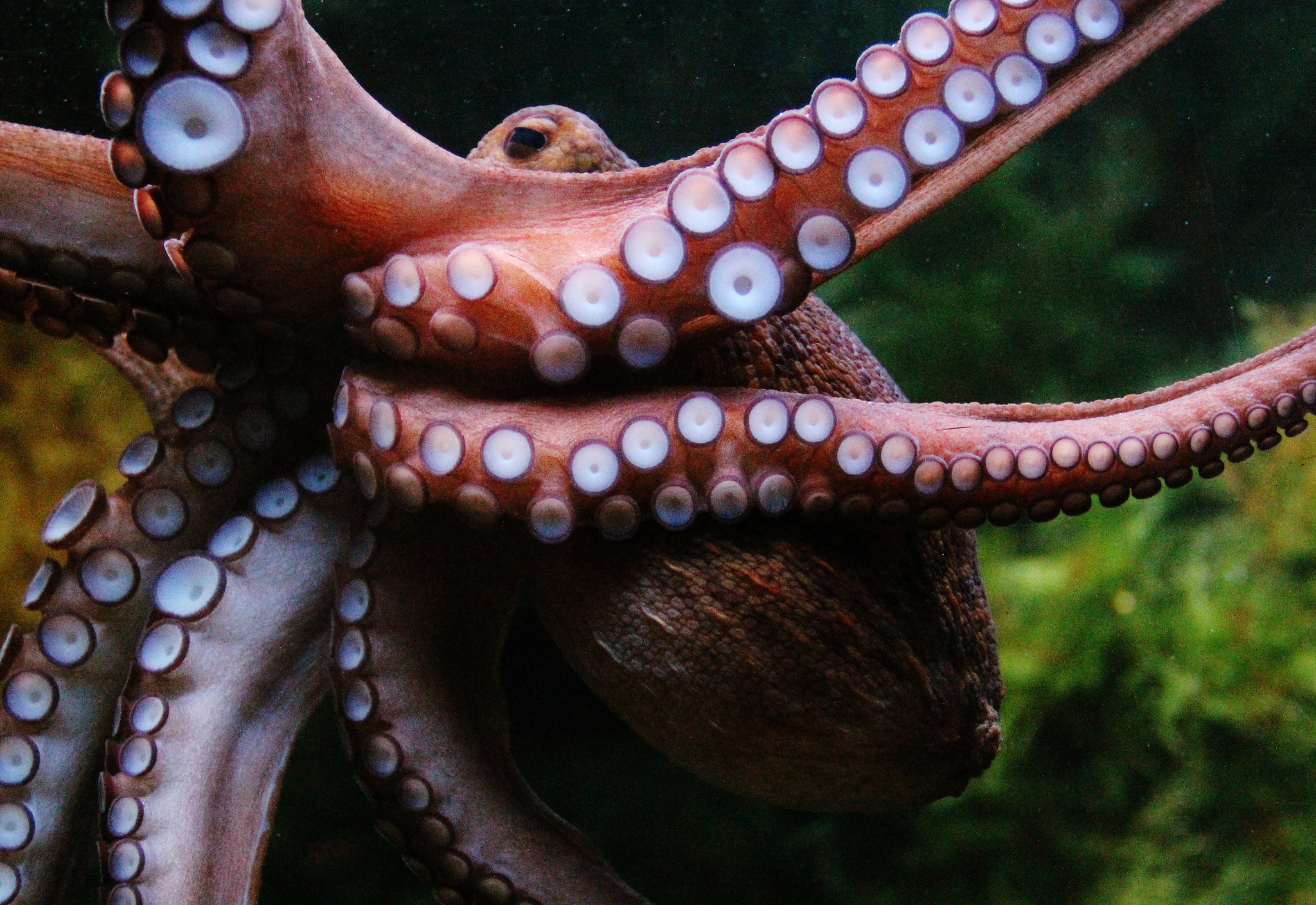This Shape-Shifting Material Mimics Octopus Skin

Credit to Author: Jacob Dubé| Date: Thu, 12 Oct 2017 18:22:44 +0000
The octopus is, without a doubt, the coolest animal on the planet. Not only are they really smart, they do some crazy shit without the aid of a pesky spine (or any bones at all). Now researchers in the US have created a material that mimics one of their greatest feats—changing the shape of their skin.
Released Thursday in Science, the study, led by engineers James Pikul and Rob Shepherd, presents a skin-like material that starts out flat but can inflate and expand into specific shapes. It could eventually be used for camouflage suits and new kinds of tech interfaces.
A membrane to test the concept. Video: J. H. Pikul et al, Science. GIF: Jacob Dubé
Pikul and Shepherd developed the material in Cornell University’s Organic Robotics Lab, which focuses on what Pikul calls “soft robotics”—technology that has the same texture as human skin, and could be applied to anything from a prosthetic hand to a robot helper.
“People are interested in robots with soft features, so they don’t accidentally crush a human,” Pikul, now an assistant professor at the University of Pennsylvania, told me in a phone interview.
But Pikul said that one of the biggest issues with soft robotics is the lack of control over the material, which scientists have been trying to surmount for years. So his team started looking into the science of cephalopods, the family of mollusks like octopi and cuttlefish, who are popular among roboticists because they can do so much without a skeletal system.
Octopus escapes through a 1 inch diameter hole. Video: James Wood/YouTube
“When people are making these soft robots, they tend to use the octopus as the perfect example of what we want our robots to do,” Pikul said. “They can crawl around, swim really fast, grab things, and can camouflage really well.”
With help from cephalopod biologist Roger Hanlon (he shot a popular video where an octopus changes colour and shape right before your eyes), the team mimicked the way that the bumps on an octopus’ skin, called papillae, contract and grow to create some crazy camouflage.
Video: Roger T Hanlon/YouTube. GIF: Jacob Dubé
Their artificial material works in a similar fashion. Pikul said they added a fiber mesh to a rubbery material to form the shapes—the elastic allows the material to stretch, and the fiber dictates what shape it forms when inflated through a small, attached tube.
While the team is planning on creating material that is able to change into several different shapes as well—the current fiber mesh is locked into one position—Pikul said that it’s not entirely necessary. To create intricate shapes on their skin, cephalopods have different sets of papillae, and can combine them into various forms depending on the situation.
Video: J. H. Pikul et al, Science. GIF: Jacob Dubé
“You can think of these like pixels on a screen. You can combine the different colours,” Pikul said. “By having these multiple pixels of texture, and being able to turn them on and off from zero to 100 percent, that allows them to camouflage in a large diversity of environment. And that’s what we can do, we can mimic that exactly.” (Other teams are working on a colour-changing skin, he told me, but that wasn’t a focus of this research.)
Read More: This Robotic Octopus Tentacle Is Not Creepy At All, Nope
Pikul said that the material could be used to create and study scuba-like texture camouflage suits (they were funded by the Army Research Office). These suits could one day be worn by humans, or used in cars and even portable structures.
He also thinks the material has potential to create new ways to interface with technologies, like a car with a flat dashboard where the material would inflate to present whatever you needed in that moment, becoming a joystick or a flat screen before your eyes.
I’ll be waiting patiently for my sneaky octopus suit.
Get six of our favorite Motherboard stories every day by signing up for our newsletter.